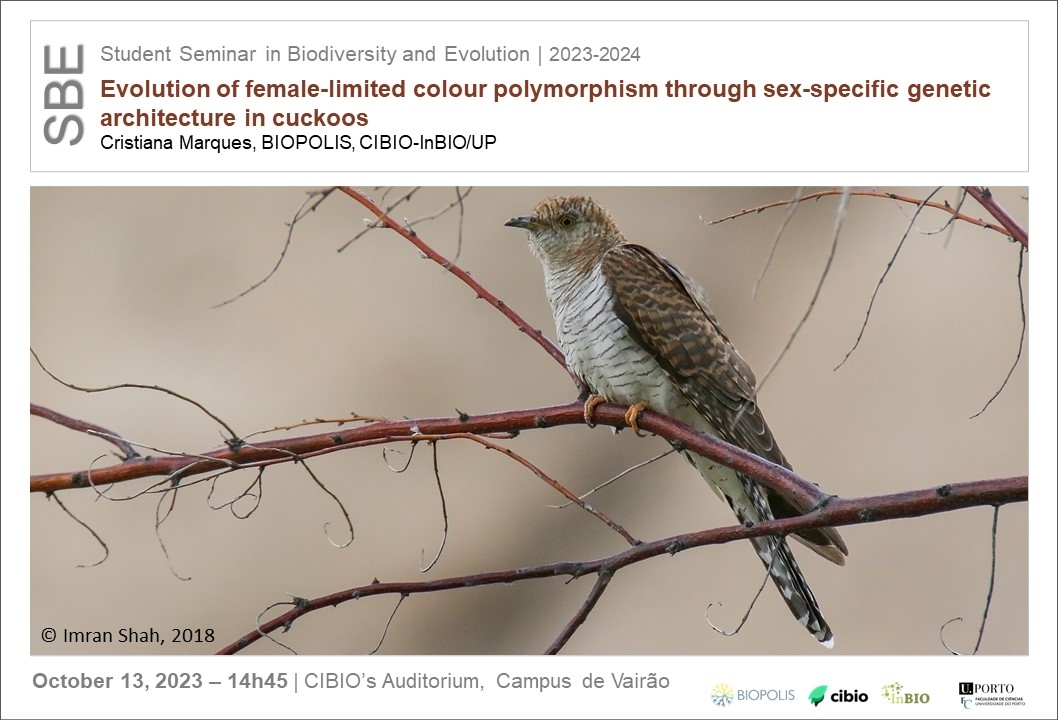Evolution of female-limited colour polymorphism through sex-specific genetic architecture in cuckoos

The
evolution of sex-specific traits has long been the subject of interest among
evolutionary biologists. In birds, female-limited plumage color may result from
conflicting selective pressures, in males and females, leading to intra-locus
sexual conflict. The common cuckoo (Cuculus canorus) is a prime example
of female-limited color polymorphism, where adult females exhibit either rufous
or grey plumage, while males are monochromatic grey. This species is well-known
for its interspecific brood parasitism and morph prevalence seems to be under frequency-dependent
selection by host recognition. Alternative plumage coloration may also
function intraspecifically to reduce sexual harassment and intrasexual
aggression caused by competition for critical resources. However, the genetic
basis of this pivotal trait and the evolutionary mechanisms maintaining it
remain obscured. Here, we identify the genomic region underlying the evolution
of the rufous plumage coloration, in female cuckoos, and investigate the
potential role of balancing selection in maintaining female-limited color
polymorphism. We show that intra-locus sexual conflict may be resolved by
ensuring sex-biased inheritance and suggest that balancing selection can
increase a species’ adaptive potential. Taken together, the findings of this
study shed light on the evolution of sex-specific polymorphisms and its
potential for new avenues in the study of bird coloration.
Cristiana Marques is a BIODIV PhD student in EVOLGEN research group at BIOPOLIS/CIBIO-InBIO. Her main research interest sets on understanding the mechanisms leading to and shaping phenotypic diversity, with especial interest on behavioral phenotypes and coloration. During her MSc, she investigated the genetic mechanisms underlying plumage color variation in Gouldian finches, using transcriptomics. She is currently working with cutting-edge genomics tools to understand the evolutionary mechanisms generating color novelty in birds, both through natural and artificial selection.